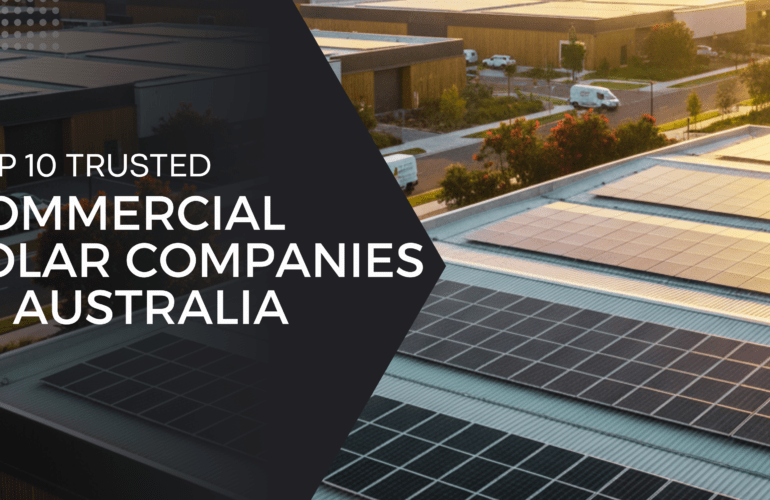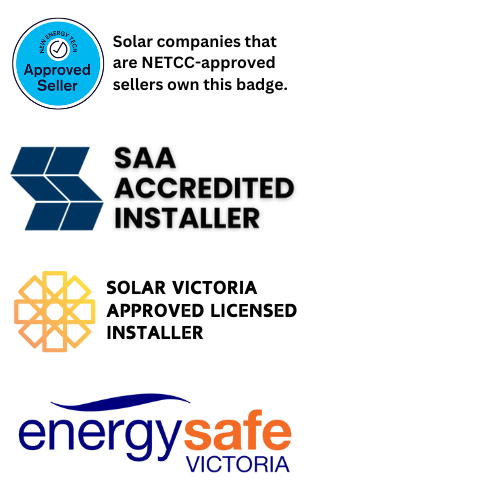How Is Electricity Made From Solar Energy? Your Guide to Turning Sunlight Into Real Savings
As more Australian residents switch to renewable sources of energy, one common question is “how is electricity made from solar energy?“
It’s not only interesting to know how this works; it also helps you make better choices regarding your solar investment, system design, and long-term savings. This comprehensive tutorial will teach you how sunlight is converted into useful electricity for your house and why solar power is Australia’s most popular renewable energy source.
Get a Free Quote
What Solar Energy Really Means for Your Home
In order to properly understand how is electricity made from solar energy , it is necessary to first understand the fundamental concept of solar power. The photovoltaic (PV) effect is a technique that turns sunlight into electricity. This is what solar energy is. Sunlight contacts a solar panel, which produces a chemical reaction within the solar cells that generates electricity.
Solar energy is:
- Clean
- Abundant
- Renewable
- Cost-saving
- Low-maintenance
Because of this, it is one of the most dependable choices for homeowners in Victoria who are trying to reduce their monthly bills, reduce their carbon footprint, and raise the value of their property over the long term.
How Solar Panels Convert Sunlight Into Electricity
The biggest question homeowners ask is: “Exactly how is electricity made from solar energy?”
Here’s the step-by-step breakdown in simple language:
1. Sunlight Hits the Solar Panels
The solar panels are made up of many solar cells, each of which is made up of silicon, a semiconductor material. When sunlight hits these cells, bits of energy called photons hit the surface.
2. The PV Effect Begins Inside the Solar Cells
Once photons hit the silicon cells, electrons inside the silicon become energized and start moving.
This motion of electrons creates DC (Direct Current) electricity.
3. The DC Electricity Flows to the Inverter
Your appliances won’t work with DC electricity. This is where the solar inverter comes in.
The inverter converts DC power into AC (Alternating Current), which is what residences in Australia use.
A lot of people are startled to find out that the inverter is equally as crucial as the panel when it comes to figuring out how is electricity made from solar energy. The energy your roof produces can’t be utilized without it.
4. Your Home Uses the Clean Solar Electricity
Once the power is converted to AC, it flows into your switchboard and begins powering your:
- Lights
- Refrigerators
- Air conditioning
- Hot water systems
- TVs and electronics
Whenever solar is available, your home automatically prioritises it — helping reduce your electricity bills immediately.
This is the most rewarding part of how is electricity made from solar energy because this is when you see real savings.
5. Excess Power Goes to Your Battery or the Grid
If your solar panels produce more electricity than your home needs, the extra power will:
- Charge your solar battery, OR
- Export back to the grid for a feed-in tariff
A battery makes the system more efficient because it stores unused energy for later use — especially helpful at night or during peak-rate periods.
Why Solar Panels Are So Efficient in Australia
Australia is one of the best countries in the world for solar power because of:
- High sunlight exposure
- Clear skies
- Warm temperatures
- Large open roof spaces
- Government rebates
These conditions improve the efficiency of how is electricity made from solar energy and help Victorian homeowners enjoy faster payback periods.
What Makes a Solar System Produce More Electricity?
If you’re deciding between different solar packages, it’s essential to know what impacts production. The following factors help maximise how is electricity made from solar energy:
1. Panel Quality
High-efficiency panels convert more sunlight into electricity.
2. Inverter Efficiency
A premium inverter increases total power output and system stability.
3. Roof Direction & Tilt
North-facing roofs in Australia get the highest sunlight exposure.
4. Shading
Even small shadows from trees or chimneys can reduce output.
5. Temperature
Contrary to belief, solar panels work better in cooler temperatures with bright sunlight.
How Long Does It Take for Solar to Pay for Itself?
Most Victorian homeowners recover their investment within 3–5 years depending on:
- System size
- Electricity usage
- Feed-in tariffs
- Whether they install a battery
Benefits of Understanding Solar Electricity Production
Knowing how is electricity made from solar energy helps homeowners:
- Choose better system components
- Understand quotations
- Improve system monitoring
- Make informed battery decisions
- Avoid common installation mistakes
Electrical Masters, as one of Victoria’s highest-rated solar installation companies, explains these steps clearly to customers so they feel confident before installing solar panels.
Is Solar Electricity Safe?
Yes — solar electricity is extremely safe. All systems installed by reputable companies include:
- Certified inverters
- Quality wiring
- Professional installation
- Automatic shutdown features
Frequently Asked Questions (FAQs)
It happens when sunlight hits solar cells, creating a flow of electrons that produces electricity. The inverter converts it into usable AC power for your home.
Yes. They still generate electricity on cloudy days — just at lower output. The better the panel quality, the better they perform in low light.
No. At night there is no sunlight, so they stop producing. That’s why many homeowners pair their solar system with a battery.
A 6.6kW system in Victoria can generate between 20–28 kWh per day depending on weather and roof conditions.
Not necessary, but highly recommended. A battery helps store excess electricity, improve savings, and provide backup during outages.
Yes. Solar panels perform best in cooler temperatures with clear sunlight. Extremely hot days can slightly reduce efficiency.
It either charges your solar battery or gets exported to the grid for credit (feed-in tariff).
Final Thoughts
By now, you should know all there is to know about how is electricity made from solar energy, from the time the sun hits your roof to the time clean electricity runs your house. Solar energy is a safe, straightforward, and intelligent investment for Australian householders who are seeking to reduce their utility bills and establish long-term savings.
Electrical Masters offers high-quality solar solutions with top-of-the-line materials and a guarantee of performance. If you want a professionally designed solar system installed by trusted local installers, they can help.
Talk to Our Expert











